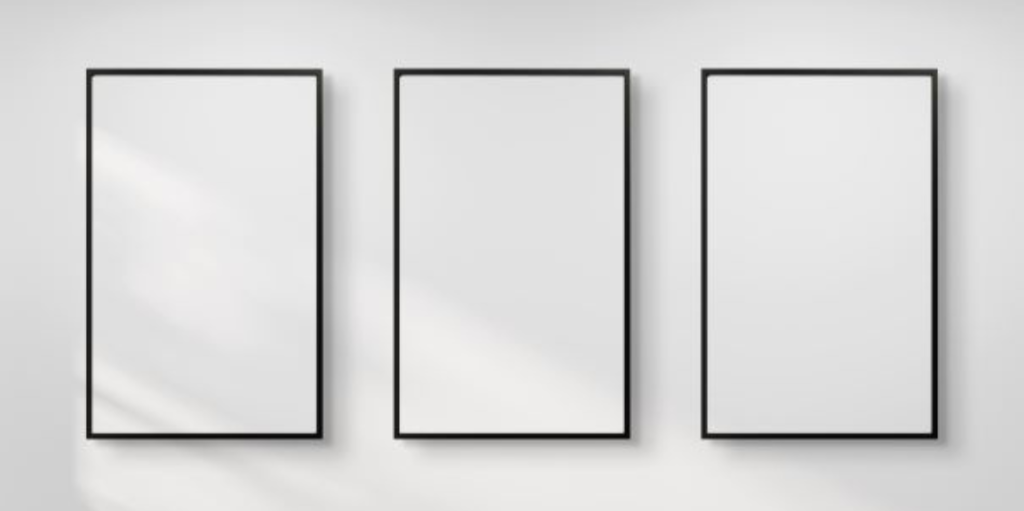While glass and acrylic do many of the same tasks, they perform differently and have diverse uses. Each has a particular objective, especially regarding framing artwork and photos, the setting in which they will be shown, and the method of display. Framed artwork and photos often hold treasured memories, so it’s crucial to consider how and where they’ll be displayed.
While, at first glance, glass and acrylic may seem very much alike, there are some glaring differences to consider. For instance, glass is heavier and more likely to break than acrylic. Therefore, glass might function better on a table than on a wall. On the other hand, acrylic weighs less than half as much as glass and is ten to 20 times stronger, so acrylic may be more appropriate for displaying bulky or delicate artwork.
Glass’ fragility is by far its worst drawback. To remedy this issue, thicker material is used as the size of the frame increases. Unfortunately, the weight of the glass increases rapidly as it thickens, which can lead to specific issues. Breaking glass usually results in a lot of incredibly sharp edges, providing an immediate threat to anything nearby. Laminated glass can mitigate this issue, but weight and cost are still concerns.
Acrylic is not weighed down with these same issues.
When To Use Acrylic For Framing Projects
Because acrylic is more flexible than glass, it’s an ideal material for framing or displaying fine art, historical photographs or documents, vintage posters, or any photo or piece of art that carries significant monetary or sentimental value.
Acrylic framing is also an excellent solution for framing pieces that will be displayed outdoors, in high-traffic areas, or in any other place where there is a significant risk of the frame being damaged.
When planning or preparing a framing project, consider the following:
- Value of the piece to be displayed
- Size of project
- Placement of the picture
- Indoor or outdoor environment
What Are the Most Popular Acrylic Options for Picture Framing?
Here are three of the most popular types and applications of acrylic in the context of museums or in-home picture framing:
- OPTIX® NG – Non-Glare Acrylic – OPTIX NG acrylic delivers unmatched levels of protection against glare, reflection, breaking, abrasion, and static, much like standard museum glass. However, acrylic is much lighter than glass, providing more potential for displaying art and photos on any area or wall. In addition, OPTIX is made to last and doesn’t require unique cleaning methods as it is cleaned the same way one would clean glass.
- OPTIX® 99 Acrylic – OPTIX 99 is an ultra-light matte finish acrylic sheet that eliminates unwanted glare. With half the weight of glass and enhanced shatter resistance properties, OPTIX 99 is perfect for framed artwork, graphics, and photographs.
- Standard Plexi-Glass – Standard plexiglass does not provide the same protection as either of the two products mentioned above. Still, it is suitable for most indoor art and photo displays. If a photo, document, or piece of artwork is precious, however, one of the two previous options would be the more recommended framing acrylic.
What Is Non-Glare Acrylic?
The matte finish of Non-Glare Acrylic Sheets (also known as P-99) was created to reduce glare and reflection from most viewing angles. Non-Glare Acrylic Sheets are lightweight, simple to construct, and shatter resistant, just like regular acrylic. Artwork, prints, and pictures are frequently displayed in art galleries and museums. Non-Glare Acrylic is available in various thicknesses and sheet sizes, along with some custom-cut options.
Why Use Acrylic Non-Glare Sheet?
The primary purpose of non-glare plastic acrylic panels is to reduce light reflection and glare. Non-glare acrylic sheet is ideal for glazing and framing applications since it is ten times stronger and weighs half as much as glass. It also lends itself to projects and uses where flexibility and convenience of production are essential. In addition, since non-glare plexiglass is inherently resistant to UV radiation deterioration, light transmission loss and yellowing tend not to be major concerns.
Have Questions About Non-Glare and Other Acrylics?
At Piedmont Plastics, we specialize in transparent materials like acrylic. Our team of passionate plastics specialists is perfectly equipped to offer the answers you require for your application. Additionally, to assist you in choosing the best material, we have devoted teams of market specialists from various industries, including marine, industrial, specialty vehicles, sign and graphics, and more.
Contact us today for more information and let our teams help come up with solutions to your manufacturing and production challenges.
